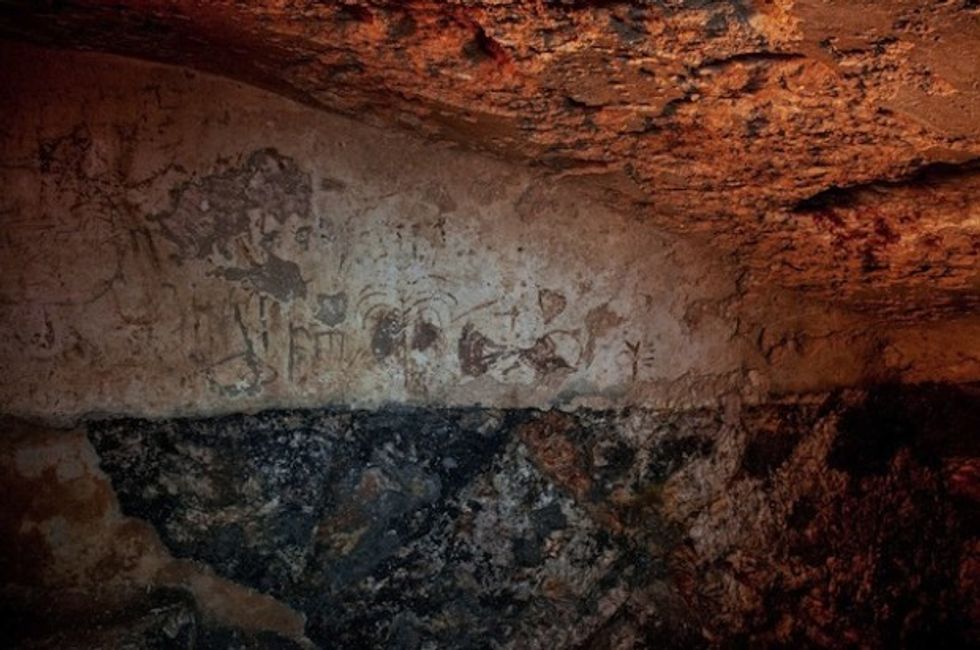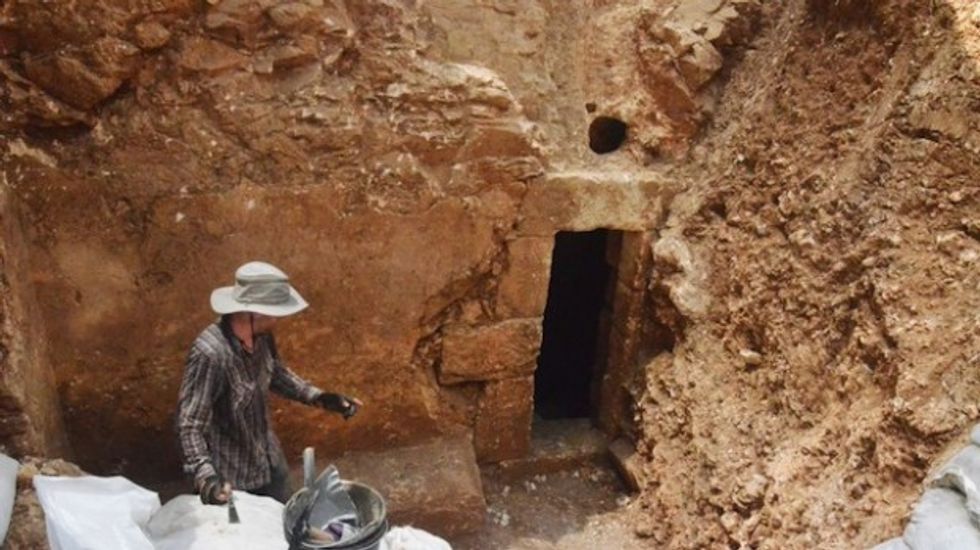
These inscriptions were found on the wall of a cave under a site planned for a Jerusalem preschool. (Photo courtesy: Israel Antiquities Authority/Shai Halevy)

In what's been called an extraordinary find, Israeli archaeologists have discovered a wall full of drawings and inscriptions believed to have been created during the Second Temple period.
The Hebrew and Aramaic script was found in an underground cave housing an ancient ritual bath, uncovered under a Jerusalem construction site planned for a preschool.

The discovery, announced Wednesday by the Israel Antiquities Authority, was made two months ago during an archaeological inspection before the preschool's construction could begin. Such inspections are routine practice in Jerusalem, given the thousands of years of history on which the holy city sits.
Researchers believe the ritual bath dates to the first century A.D., the Antiquities Authority said:
The walls of the miqwe [bath] were treated with ancient plaster and were adorned with numerous wall paintings and inscriptions, written in mud, soot and incising. The inscriptions are Aramaic and written in cursive Hebrew script, which was customary at the end of the Second Temple period. Among the symbols that are drawn are a boat, palm trees and various plant species, and possibly even a menorah.
“There is no doubt that this is a very significant discovery,” excavation directors Royee Greenwald and Alexander Wiegmann said in a joint statement Wednesday. “Such a concentration of inscriptions and symbols from the Second Temple period at one archaeological site, and in such a state of preservation, is rare and unique and most intriguing.”
“On the one hand, the symbols can be interpreted as secular, and on the other as symbols of religious significance and deep spirituality,” the excavations chiefs said.
The Antiquities Authority raised some intriguing questions about the inscriptions:
What is the relationship between the symbols and the inscriptions, and why, of all places, were they drawn in the ritual bath? Who is responsible for painting them? Was it one person or several people? Was it someone who jokingly wanted to scribble graffiti, or perhaps what we have here is a desire to convey a deeply spiritual and religious message, perhaps even a cry for help as a result of a traumatic event (the destruction of the Temple and the catastrophic war of 66-70 CE [A.D.])?
While the meaning of the message remains unclear, the themes of the drawings reflect those seen during the Second Temple period.

However, one of the images might be a menorah, which would be “exceptional” because the tradition at the time was to not depict the sacred Temple object in drawings.
“The archaeological and historical site that was exposed is of tremendous value to our identity as a Jewish people which might shine more light on the lives of our ancestors in the city of Jerusalem,” said Moshe (Kinley) Tur-Paz, who heads the education department at the Jerusalem Municipality.
Besides the ritual bath, an anteroom, benches and winepress were also discovered in the cave.